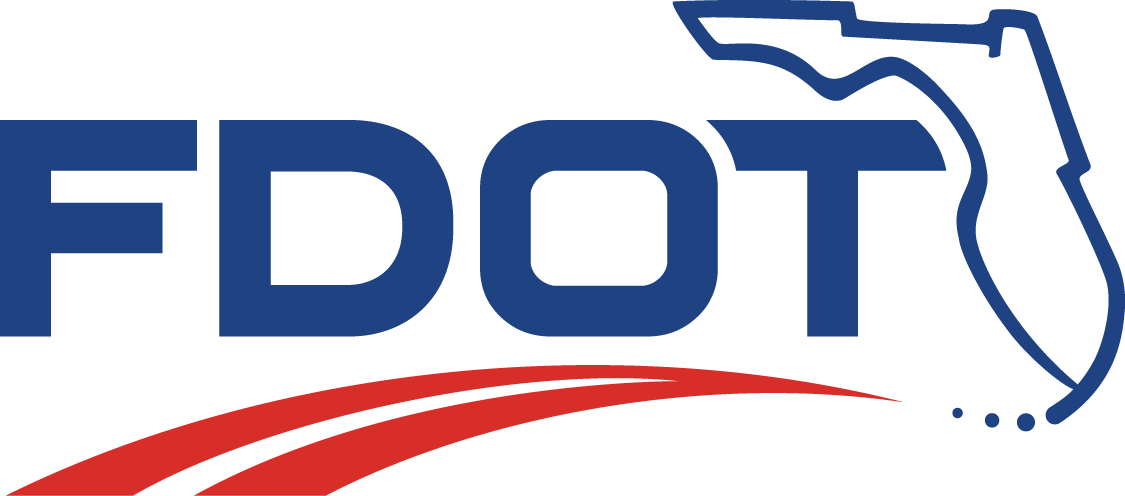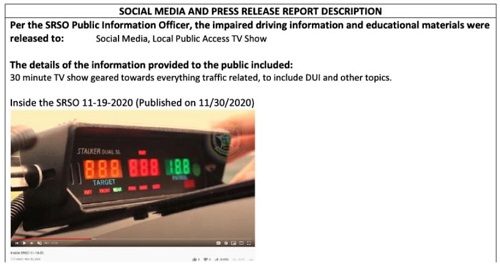Speed and Aggressive Driving
Speed and Aggressive Driving
The National Highway Traffic Safety Administration (NHTSA) defines aggressive driving as, "when individuals commit a combination of moving traffic offenses so as to endanger other persons or property." Aggressive driving occurs when a driver has committed two or more of the following actions: speeding, failure to yield to right-of-way, improper or unsafe lane changes, improper passing, following too closely or the failure to obey traffic control devices (stop signs, yield signs, traffic signals, railroad grade cross signals, etc.). Aggressive Driving Aggressive Driving is one of eight emphasis areas listed in Florida's 2021 Strategic Highway Safety Plan, (SHSP). To combat aggressive driving, our efforts focus on:
Speed Control Speed Control involves a balanced program effort that includes: defining the relationship between speed, speeding, and safety; applying road and engineering measures to obtain appropriate speeds; setting speed limits that are safe and reasonable; applying enforcement efforts and appropriate technology that effectively address speeders and deter speeding; marketing communication and educational messages that focus on high-risk drivers; and soliciting the cooperation, support, and leadership of traffic safety stakeholders.
Subgrant Funding Programs receiving subgrant funding in this priority area are focused on three major program-related categories:
Items eligible for funding under this category may include speed measuring devices, radar display trailers, and equipment directly related to assisting in making traffic stops. The International Association of Chiefs of Police (IACP) assisted NHTSA with developing a Conforming Product List (CPL) to which speed measurement devices strived to be on. The CPL became the basis for funding to agencies desiring to purchase speed measurement equipment. If the product was on the list, NHTSA funds could be used to purchase it. Florida has a similar list within the Administrative Code. FHP tests equipment and lists approved devices in 15B-2.013. Agencies can use this list: https://www.flrules.org/gateway/ruleno.asp?id=15B-2.013 to purchase their approved equipment for their project. All program areas funded with subgrant funds are required to have an evaluation method that will allow assessment of the funded program's level of success in reducing fatalities and injuries. For more information, see our Grants page.
|
Enforcement
In Florida, law enforcement agencies take speeding and aggressive driving very seriously. Their goal is to save lives and they are putting all drivers on alert; the posted speed limit IS THE LAW. Officers will be on the lookout for, and ticketing, speeding and aggressive drivers.
Education
Speeding and red-light running are the most frequently cited aggressive driving violations. A 2011 publication of The National Highway Transportation Safety Administration reports that excessive speed is common with a large majority of drivers admitting to speeding. The NHTSA publication also reports that "the percentage of speeding crashes has changed little over the years."
Engineering
Infrastructure may contribute to aggressive driving. Coordinated signal timing between intersections, new or different signal timing, or speed limit reviews may help reduce aggressive driving. "Speed limits should be set based on the road segment’s design speed, vulnerable users, traffic operations, and environmental conditions; if not, many drivers may lose respect for and exceed the speed limit."1
Other effective engineering countermeasures include red light cameras, advanced warning or flow control via Intelligent Transportation Systems, traffic calming, properly scheduled and designed work zones, turn bays, turn lanes, standing bays for buses, variable speed limits and variable direction lanes.
1 - National Highway Traffic Safety Administration - Countermeasures that Work
 Image of crash data chart
Image of crash data chart
Resources
For more information contact Ariel Napier at ariel.napier@dot.state.fl.us or (850) 414 - 4226
Page updated: October 19, 2023



 Police running speed radar with two cars passing
Police running speed radar with two cars passing Image of social media press release with picture of mounted police radar
Image of social media press release with picture of mounted police radar